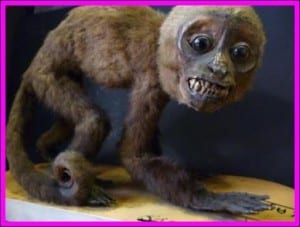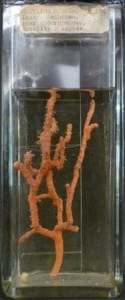Specimen of the Week: Week Fifty-Four
By Emma-Louise Nicholls, on 22 October 2012
 Last week, after 19 hours on a broken down train (give or take), I attended the Wildscreen Festival in Bristol. The sessions were fantastic and ranged from super technical to ‘sit and watch my pretty film footage and then I’ll tell you my secrets’ (my favourite). It got me thinking about what we, as viewers, focus on when we watch these wildlife documentaries. In the case of footage of marine environments, it is often the background players with non-speaking parts that provide much of the atmosphere and, in the case of this week’s specimen, the colour. After spending a little while contemplating this point, I decided I feel they deserve a shout-out. So, staying in the world of marine invertebrates but switching primary colour, this week’s Specimen of the Week is…
Last week, after 19 hours on a broken down train (give or take), I attended the Wildscreen Festival in Bristol. The sessions were fantastic and ranged from super technical to ‘sit and watch my pretty film footage and then I’ll tell you my secrets’ (my favourite). It got me thinking about what we, as viewers, focus on when we watch these wildlife documentaries. In the case of footage of marine environments, it is often the background players with non-speaking parts that provide much of the atmosphere and, in the case of this week’s specimen, the colour. After spending a little while contemplating this point, I decided I feel they deserve a shout-out. So, staying in the world of marine invertebrates but switching primary colour, this week’s Specimen of the Week is…
**The Red Coral**
1) The animal of a coral has done what many a human, normally villains in animated films, dream of doing, they have achieved immortality. Though not through clever potions of dividing their souls in seven horcruxes, coral are not formed from a single animal but a colony made up of thousands of genetically identical individuals called polyps.
2) Each polyps has eight tentacles that together with the tentacles of other polyps, form a tall, branching, tree-like structure that can reach up to over a metre in height and are responsible for the colours on the reef that make divers go ‘woooh’.
3) The red coral inhabits deep water with rocky substrates to which it will be attached. They typically colonise banks, seamounts, and rocky areas such as under ledges, and in and around caves where the bottom currents are strong. The red coral is found in the Mediterranean Sea and in the eastern Atlantic Ocean, at depths of between 7 and 300 metres.
4) Unusually for corals which are normally a bit more gregarious, red corals typically separate themselves into male and female colonies. It is thought that fertilization occurs through free-swimming sperm, ejected from the male colony, finding the polyps of the female colony. Makes you wonder what you’re swimming through in murky water. After fertilization, the egg develops inside the body cavity of the female polyps. After around 30 days, the tiny larvae are released into the water column. This occurs between late July and August and is a magnificent sight. The larvae begin new colonies near the parent colony by settling on, and attaching themselves to, the substrate.
5) Measuring your kids against the door frame would not be very rewarding if you are a red coral as it grows less than one centimetre a year. Left undisturbed, it can live up to 100 years old but of course, what do humans leave undisturbed? They do not reach sexual maturity until the colony is between 7 and 12 years old. Red coral feeds on organic particles floating within the water by catching detritus material with the tentacles of each polyps that are extended into the water column. The tentacles then pass the food to the mouth located at the centre of each polyps.
Emma-Louise Nicholls is the Museum Assistant at the Grant Museum of Zoology
 Close
Close



